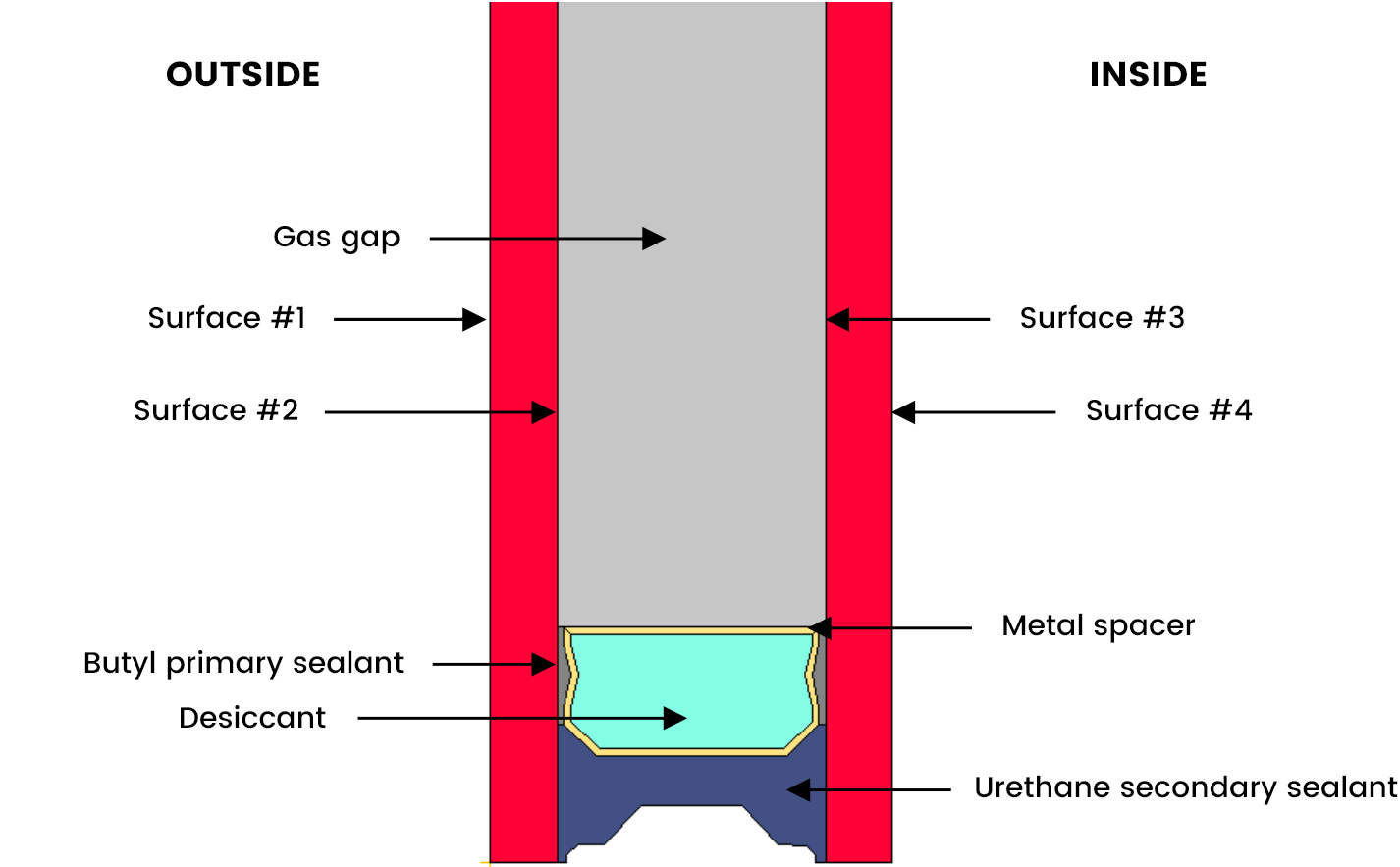
Thermal Performance Analyses of Window Systems
The correct design of the window systems is critical for optimizing the heating and cooling loads in the building and meeting the energy requirements of all other systems used in this period when energy consumption is very important. In the building, the window is the component with the highest energy losses and gains. Therefore, thermal performance is one of the most important factors in window systems. The design and selection of window systems to provide the least energy consumption is an important fact in terms of both equity and user comfort.
Two different ways can be followed to calculate the thermal performance values of window systems. These; simulations carried out through experimental studies and software. Since experimental studies require high costs in terms of time, simulations come to the fore with the advances in hardware infrastructure and software technologies.
When the window system is considered in simulations, the heat transfer coefficient (U-value) of the system is obtained. A window system consists of an insulated glazing unit (IGU) and a frame.

The window frame is the partition that holds the glass of the window and, when installed, sits between the glass and the building wall. The area covered by the window frame is generally 30 percent of the window system. Window frames can be made from a single material or a composite of many materials. The most common frame types are; are wooden, vinyl, aluminum and fiberglass frames. Modern window frames reduce air leakage to almost zero and when used with advanced glasses, heating and cooling costs can be reduced by 40 percent [1]. When choosing a window system, considering the frame as well as the glass is extremely important in terms of energy efficiency. For this reason, in order to get a good idea in terms of insulation values, it is necessary to look at the U-value of not only the glass but also the window system with the frame.
By modeling the complex geometries of a window system, two-dimensional heat transfer analyzes are performed using the finite element method. With numerical methods, Total Heat Transfer Coefficient (U-value) and Solar Heat Gain Coefficient (SHGC) are calculated to be used in annual energy requirements calculations. Procedures in ISO 15099 [2] standard are applied in thermal performance analysis.
Total Heat Transfer Coefficient
The U-value of a window system represents the total heat transfer coefficient or insulation value. Its unit is W/(m^2)K [3].
U-value depends on the thermal properties of the materials in the window system (k value or lambda), weather conditions such as indoor and outdoor temperature difference and wind speed. The lower the U-value, the more energy-efficient the window system. The lower the U-value, the better the glass insulates.
Thermal performance is a feature enhanced by the thickness of the air or gas gap trapped between the and the special film coatings applied to the glasses. Film coatings are taken into account in the analysis as film coefficients. The film coefficient is a numerical value representing the resistance of the aerial film. In addition, this coefficient is calculated and defined in the analysis depending on the location of the model and the interpolation of the values contained in the ASHRAE Fundamentals 2013 Chapter 26 Table 10 standard.
Solar Heat Gain
Regardless of the outdoor temperature, window systems can generate heat directly or indirectly through radiation. The resulting heat gain; Solar Heat Gain Coefficient (SHGC) and Shading Coefficient (SC) are controlled.
SHGC, represents solar energy gain according to solar radiation from the sun. It is the percentage of total solar energy coming into the glass. The lower the SHGC, the less solar heat it transmits and the more its shading ability.
A product with a high SHGC rating is more effective in collecting solar heat in winter. A product with a low SHGC rating is more effective in reducing cooling loads in the summer by preventing the heat gain from the sun.
Daylight Transmittance
The ability of the windows in a window, door, or skylight to transmit sunlight to a location, and the intensity of daylight varies depending on the window placement, daylight time, year time, and weather.
Daylight transmittance refers to the ratio of the solar radiation passing from the glass unit to the inner space in a certain wavelength range. Daylight transmittance is the percentage of the visible wavelength (380-720 nm) of glass that comes to the glass as Visible Transmittance (VT).
Thermal Performance of Window System (U-value)
The basis of energy conservation is the control of heat losses and gains. Heat always moves from the hot surface to the cold surface. This means the flow of heat from the hot interior in the winter to the cold outside and in the opposite direction in the summer. The energy transition in windows takes place in three ways [4]. These; conduction, convection and radiation are heat transfer.

The window system consists of a double glass and aluminum frame using an air-argon gas mixture in the gap between the glasses. As a result of the two-dimensional heat transfer analysis of this window system, the U-value of the window system is 2.62 W/(m^2)K. The thickness of the window frame is 63.5 mm.

References
[1] https://www.thisoldhouse.com/windows/21015335/clear-choices-for-windows
[2] ISO 15099:2003. Thermal performance of windows, doors and shading devices — Detailed calculations. https://www.iso.org/standard/26425.html
[3] https://en.wikipedia.org/?title=U-value&redirect=no
[4] Arasteh D., Carmody J., Lee, E., Selkowitz S., Willmert, T., 2003. Window Systems For High-Performance Buildings, W.W. Norton & Company, London.



